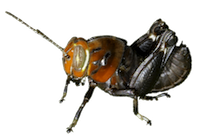| |
Family (Alpha): | |
| View | Acrididae Members:
| NC Records |
|---|
Melanoplus angustipennis (Dodge, 1877) - Narrow-winged Locust |
 |
|
|
|
|
|
Image Gallery for Melanoplus angustipennis - Narrow-winged Locust
|
 | Recorded by: Stephen Hall
Harnett Co.
Comment: |  | Recorded by: B.B. Fulton
Moore Co.
Comment: NSCU Insect Museum specimen. Identified as subspecies impiger. Determined by M. Dakin, 1982 |
 | Recorded by: B.B. Fulton
Harnett Co.
Comment: NSCU Insect Museum specimen. Identified as subspecies impiger. |

 »
»
 »
»